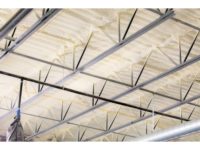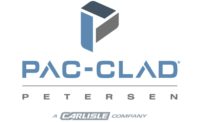Honeywell announced that SES Foam, a leader in bio-based foam technology, has transitioned to Honeywell’s ultra-low global-warming-potential (GWP) material for wall insulation, with roofing systems to follow.
SES has introduced new 2.0 closed-cell spray polyurethane foam (ccSPF) formulated with Honeywell’s Solstice Liquid Blowing Agent (LBA) for use in wall insulation applications. SES joins a growing list of companies that have switched from hydrofluorocarbon (HFC) foam blowing agents such as HFC-365mfc and HFC-245fa to Solstice LBA in ccSPF systems, well ahead of environmental regulations calling for a phaseout of HFCs due to their high GWPs. More than 190 countries recently agreed to an amendment to the Montreal Protocol that would phase down the use of HFCs beginning in 2019.
Solstice LBA, which is based on next-generation hydrofluoro-olefin (HFO) technology, complies with changing regulatory requirements aimed at reducing climate impact, while also providing improved foam performance compared to HFCs. Blowing agents are a critical ingredient in closed-cell foam, allowing it to expand and enabling its excellent insulating performance.
“SES is proud of its longstanding commitment to sustainable solutions and innovation,” said Charles Valentine, chief operating officer, SES Foam. “Having successfully built our open-cell foam business around sucrose-based technology, we believe that adopting Honeywell’s Solstice LBA in our closed-cell foam is a natural fit that aligns perfectly with our customers and environmental focus. Our expertise is unique in that many of our staff are former spray foam contractors, so they have keen insight into customers’ needs, and can provide the support and products they require to succeed.”
Widespread adoption of Solstice LBA would save about 60 million metric tons of carbon dioxide equivalent per year, comparable to eliminating carbon dioxide emissions from more than 11.8 million cars.1
“Honeywell is committed to helping industry leaders like SES create environmentally innovative solutions such as using Solstice LBA in its closed-cell foam,” said Laura Reinhard, global business manager for spray foam, Honeywell. “Not only does Solstice LBA provide SES with an environmentally preferable solution, it has helped their new 2.0 product formulation deliver outstanding foam performance.”
Solstice LBA has an ultra-low GWP of 1, which is 99.9 percent lower than HFCs and equal to carbon dioxide. It is nonflammable (ASTM E-681) and is not a volatile organic compound per the EPA. Solstice LBA is listed under the EPA’s Significant New Alternatives Policy (SNAP) program. In Europe, it is not listed in the Annex I of F-Gas regulation and thus not considered an F-Gas. It is also registered under the European Union’s REACH program. Honeywell’s Solstice LBA world-scale manufacturing plant in Louisiana started up in May 2014.
Worldwide adoption of Solstice products has resulted in the reduction of more than 32 million metric tons of greenhouse gases to date, equal to eliminating emissions from more than 6 million cars.
Solstice LBA is used in a variety of rigid foam insulation applications, including spray foam insulation, residential and commercial refrigeration equipment, and insulated metal panels, as well as flexible foam applications, such as molded and slabstock foam, and integral skin. For more information on Solstice LBA, visit www.honeywell-blowingagents.com.
1. Source: GHG Equivalencies Calculator: https://www.epa.gov/energy/greenhouse-gas-equivalencies-calculator.





